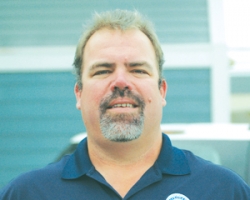There has recently been a lot of talk around town about sea lions. Up and down the California coast, there has been a large amount of sick sea lion pups reported. In Seal Beach, we have seen a large increase in sea lions coming onshore. In fact, since Jan. 1, lifeguards have received 26 calls concerning sea lions onshore.
When the Lifeguard Department spots a sea lion or receives a call about a sea lion on the beach, our first step is to evaluate the animal.
Lifeguards will take a look at the animal and get a general impression. If the animal is deceased, we call the Public Works Department to have it picked up, which routinely happens the same day.
If the animal is alive, lifeguards will evaluate the sea lion and determine if the sea lion is able to be captured.
A seriously sick or injured seal lion will be lethargic or not move at all.
This indicates to us that the animal may be captured. If the chances look good for an animal capture, we call Friends of the Sea Lion in Laguna Beach or Long Beach Animal Care Services (the city’s contracted animal control service) for pick up.
Our main mission is to keep beachgoers safe and removing the sick or injured sea lion helps us accomplish this goal.
We also post signs near the sea lion asking the public to stay away, as sea lions are protected by the Marine Mammal Protection Act of 1972.
If the sea lion moves away quickly as a lifeguard advances and stays on the beach, lifeguards post a warning sign for the public to stay away. We then call marine mammal rescue and continue to monitor the animal.
Frequently, the sea lion will go back into the water and leave the area. When this happens we continue to keep an eye out for the animal and monitor the situation.
This year, with what experts are calling an “unusual mortality event,” the procedure has changed.
The changes are a result of rescue facilities being at their maximum capacity.
This year, when we have sea lion pups come onshore, we take a picture and send it to the Friends of the Sea Lions and report if the animal looks like an easy capture.
The Friends of the Sea Lions assess the health of the animal from the picture and decide if they want to send someone to attempt a capture.
If the sea lion is still on the beach after 24 hours, the volunteers from Friends of the Sea Lions will usually respond.
Having to wait for a 24 hour period may give individuals the perception that the Lifeguards are not doing anything.
Contrary to this perception, we are following established procedures from professionals to protect not only the local sea life, but also the beach going public.
The unfortunate reality is not all of the sea lions are going to survive.
There are numerous articles on how and why this is happening. Sea lions found on the beach is a typical occurrence; however, this year it is happening at an increased rate.
It is important for the public to remember these are wild animals and can bite.
Here are some important tips to remember:
• Don’t touch the animal.
• Don’t pick up the animal.
• Don’t pour water on the animal.
• Don’t feed the animal; they are easily stressed by humans.
• Do not return the animal to the water. Seals and sea lions temporarily “haul-out” of the water and go on land to rest.
This is normal behavior, so not all animals will need our help.
• Please keep your distance in order to give the animal the best chance of survival.
• Politely keep other people away from the animal.
Call the Seal Beach Marine Safety Department at 562-430-2613 (open 8 a.m. to 6 p.m.) for assistance.
Between the hours of 6 p.m. and 8 a.m., please call one of the following organizations, depending on your location:
• Orange County: Pacific Marine Mammal Center, 949-494-3050;
• L.A. County: Marine Animal Rescue, 800-399-4253;
– Malibu City Limits: California Wildlife Center, 310-458-9453;
– Ventura County: Channel Islands Marine & Wildlife Institute, 805-567-1505;
– San Diego County: Sea World Rescue, 800-541-SEAL; or
– Santa Barbara County: Santa Barbara Marine Mammal Center, 805-687-3255.
Following these tips and making contact with one of the organizations above can help ensure the safety of all involved and give the sea lion the best chance of survival.
Joe Bailey is chief of the Seal Beach Marine Safety (Lifeguard) Department.












